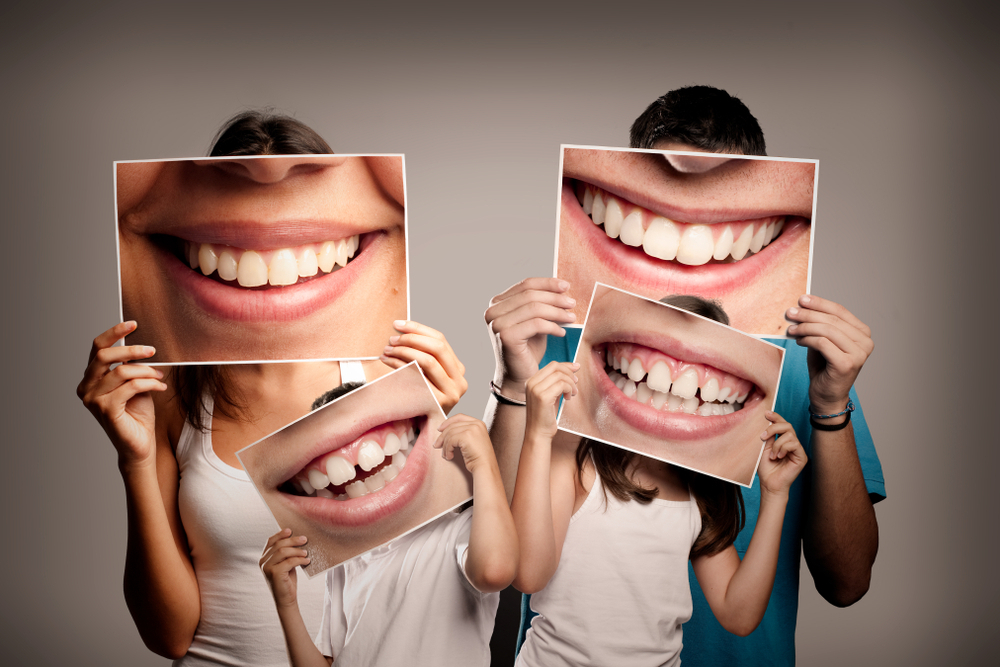The Best Strategy To Use For Legacy Orthodontics
The Best Strategy To Use For Legacy Orthodontics
Blog Article
The Of Legacy Orthodontics
Table of ContentsThe 7-Second Trick For Legacy OrthodonticsA Biased View of Legacy OrthodonticsLegacy Orthodontics Fundamentals ExplainedThe Only Guide for Legacy OrthodonticsFascination About Legacy Orthodontics
At Advanced Orthodontics, we supply people with a holistic treatment experience. In addition, we provide flexible treatment routines, flexible payment alternatives and a fun, satisfying experience. leesburg orthodontist. Phone call ( 480) 357-4900 today for additional information and routine an appointment.An orthodontist is a dental expert trained to detect, avoid, and treat teeth and jaw irregularities. They deal with existing conditions and are educated to determine issues that might create in the future. Orthodontists collaborate with people of any ages, from children to grownups. Individuals frequently associate a best smile with health.
Malocclusion, or misaligned teeth, can result in dental problems, consisting of tooth decay, gum tissue disease, and difficult or painful chewing. Not everyone is born with straight teeth. If you have a poor bite or big rooms in between your teeth, you may wish to seek advice from a dental professional concentrating on orthodontic care.
Legacy Orthodontics Things To Know Before You Buy
( Photo Debt: DigitalVision/Getty Images) Orthodontists use fixed and removable oral tools, like dental braces, retainers, and bands, to alter the position of teeth in your mouth. Orthodontic treatment is for oral abnormalities, consisting of: Crooked teethBite problems, like an overbite or an underbiteCrowded teeth or teeth that are also far apartJaw misalignmentThe objective of orthodontic therapy is to boost your bite.
A healthy bite ensures you can eat, chew, and talk correctly. While you might consider orthodontists as mainly for children or teenagers who require braces, they can fix oral troubles at any age. Orthodontists attend college, oral college, and orthodontic college. After college graduation, they invest 2 or 3 years in an orthodontic residency program.
, yet not all dental experts are orthodontists. They concentrate on 2 locations: Exactly how to properly and securely move teeth Just how to correctly assist growth in the teeth, jaw, and faceOnce an orthodontist has actually finished training, they have the option to become board licensed.
Some Known Factual Statements About Legacy Orthodontics
Malocclusion leads to tooth congestion, an askew jaw, or irregular bite patterns. Malocclusion is usually treated with: Your orthodontist connects steel, ceramic, or plastic square bonds to your teeth.
If you have only minor malocclusion, you might be able to use clear dental braces, called aligners, as opposed to traditional braces (https://www.avitop.com/cs/members/legacyortho.aspx). Some people need a headgear to aid relocate teeth right into line with pressure from outside the mouth. After braces or aligners, you'll require to put on a retainer. A retainer is a personalized tool that keeps your teeth in location.
They can create added space in the mouth without having to pull teeth. Orthodontists use wires, surgical screws, or plates to sustain your jaw bone.
You might require to see an orthodontist if you have: Crowding or not adequate area for every one of your teethOverbite, when your top teeth Going Here come by your bottom teethUnderbite, when your base teeth are too much forwardSpacing or problems with gapsCrossbite, which is when your upper teeth fit behind your base teeth when your mouth is closedOpen bite or an upright void between your front base and top teethMisplaced midline, when the center of your bottom and top teeth don't align Correcting a dental malocclusion can: Make attacking, chewing, and speaking easierImprove the symmetry of our face and your general appearanceEase discomfort from temporomandibular joint conditionsSeparate your teeth and make them easier to cleanse, aiding protect against dental cavity or tooth cavities It's commonly a dentist that initially notifications misaligned teeth throughout a routine exam.
Legacy Orthodontics Fundamentals Explained

Throughout your very first orthodontic appointment, you'll likely have: A dental examPhotos taken of your face and smileDental X-raysPanoramic (360 level) X-rays of your face and headImpressions to produce molds of your teethThese tests will aid your orthodontist understand how to wage your treatment. leesburg clear braces. An orthodontist is a dental practitioner that's had training to treat your teeth and jaw
Orthodontists may perform surgical treatment, exams,X-rays,and more to aid you attain a much more comfy, healthier smile. An orthodontist is concentrated on your bite, so something like a chipped tooth would be managed by a dental expert. Orthodontists are dental professionals however not all dentists are orthodontists. Orthodontists are concentrated on your bite, or the means your teeth meshed, and the straightness of your teeth.
Ever asked yourself how celebrities always appear to have perfectly straightened teeth? Orthodontists are dental professionals who focus on remedying abnormalities in the teeth and jaws.
10 Easy Facts About Legacy Orthodontics Described

, orthodontists have a varied toolkit at their disposal. These reliable braces use a system of brackets bonded to the teeth and attached by cables.
Clear aligners, like Invisalign, are a popular option for people seeking a more very discreet therapy option. These removable trays are custom-made to gradually shift the teeth's placement. Headgear may be used in combination with braces or aligners to apply additional targeted pressures, particularly for fixing jaw disparities. In cases of narrow jaws, palatal expanders can be made use of to create space for correct tooth positioning.
Report this page